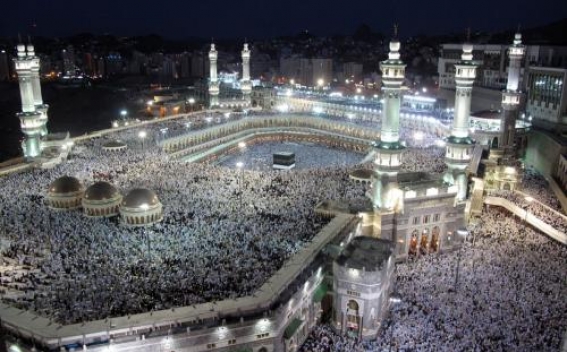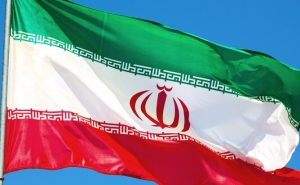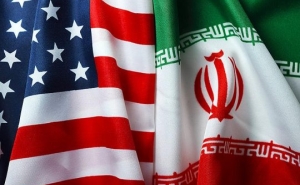Iran Suspends Participation In Annual Hajj Pilgrimage to Saudi Arabia

Saudi Arabia does not have a diplomatic mission in Tehran any longer, it wants Iranian pilgrims to travel to a third country to obtain a visa. Saudi Arabia also had not accepted Iranian proposals for the security and transportation of the Iranian pilgrims. "The sabotage is coming from the Saudis. Their attitude was cold and inappropriate," Culture and Islamic Guidance Minister Ali Jannati said.
According to the official data, Iranian pilgrims are one of the largest groups making Hajj in Saudi Arabia. Every year more than 600 thousand Iranians visit the Islamic shrines of the Kingdom.
The Hajj is an annual Islamic pilgrimage to Mecca, and a mandatory religious duty for Muslims that must be carried out at least once in their lifetime by all adult Muslims, who are physically and financially capable of undertaking the journey. It is one of the five pillars of Islam. The pilgrimage occurs from the 8th to 12th of Dhu al-Hijjah, the last month of the Islamic calendar. Among these five days, the 9th Dhul-Hijjah is known as Day of Arafah, and this day is called the day of Hajj. That day the pilgrims confirm their intention to make the pilgrimage. After the morning prayer on the 8th of Dhu al-Hijjah, the pilgrims proceed to Mina where they spend the whole day and ofternoon, afternoon, evening, and night prayers. The next morning after morning prayer, they leave Mina for Arafat.
On 9th Dhu al-Hijjah before noon, pilgrims arrive at Arafat, a barren and plain land some 20 kilometers east of Mecca, where they stand in contemplative vigil: they offer supplications, repent on and atone for their past sins, and seek mercy of God, and listen to sermon from the Islamic scholars. Lasting from noon through sunset, this is known as "standing before God" (wuquf), one of the most significant rites of Hajj.[At Masjid al-Namirah, pilgrims offer noon and afternoon prayers together at noon time. A pilgrim"s Hajj is considered invalid if they do not spend the afternoon on Arafat.
Pilgrims must leave Arafat for Muzdalifah after sunset without praying maghrib (evening) prayer at Arafat. Muzdalifah is an area between Arafat and Mina. Upon reaching there, pilgrims perform Maghrib and Isha prayer jointly, spend the night praying and sleeping on the ground with open sky, and gather pebbles for the next day"s ritual of the stoning of the Devil. After returning from Muzdalifah, the Pilgrims spend the night at Mina.
Back at Mina, the pilgrims perform symbolic stoning of the devil (Ramy al-Jamarat) by throwing seven stones at only the largest of the three pillars, known as Jamrat al-Aqabah from sunrise to sunset.
After the casting of stones, animals are slaughtered to commemorate the story of Abraham and Ishmael. Traditionally the pilgrims slaughtered the animal themselves, or oversaw the slaughtering. Starting from noon to sunset on the 11 Dhu al-Hijjah (and again the following day), the pilgrims again throw seven pebbles at each of the three pillars in Mina. This is commonly known as the "Stoning of the Devil".
On 12 Dhu al-Hijjah, the same process of stoning of the pillars as of 11 Dhu al-Hijjah takes place. Pilgrims may leave Mina for Mecca before sunset on the 12th. Finally, before leaving Mecca, pilgrims circle the Kaaba seven times counter-clockwise, and if they can, attempt to touch or kiss the Kaaba.
Generally more than 2 million Muslims every year go to Saudi Arabia for Hajj, that brings about $ 2 billion income for Saudi Arabia.
-
 17:08
17:08The regular session of the Anti-corruption Policy Council takes place in Jermuk
-
 15:05
15:05The Prime Minister sends congratulatory messages to the supreme leader of Iran and the President of Iran
-
 11:11
11:11Armenia sends earthquake aid to Turkey
-
 10:43
10:43Commemoration of the Pontiff St. Sahak Partev
-
 09:16
09:16Some roads are closed and difficult to pass in Armenia
-
 19:55
19:55Phone conversation of the Foreign Minister of Armenia with the U.S. Assistant Secretary of State for European and Eurasian Affairs
-
 18:30
18:30Prime Minister Pashinyan and President Khachaturyan meet
-
 18:20
18:20Ararat Mirzoyan with Co-Chairman of the OSCE Minsk Group of France Brice Roquefeuil
-
 17:01
17:01Humans could land on Mars within 10 years, Musk predicts
-
 16:45
16:45France, US urge 'immediate' end to Nagorno Karabakh blockade
-
 16:01
16:01Blockaded Nagorno Karabakh launches fundraiser to support quake-hit Syria
-
 15:59
15:59Earthquake death toll in Turkey rises to 18,342
-
 15:43
15:43Ararat Mirzoyan Held a Telephone Conversation with Sergey Lavrov
-
 15:06
15:06French president rules out fighter jet supplies to Ukraine in near future
-
 14:47
14:475 Day Weather Forecast in Armenia
-
 14:44
14:44President Vahagn Khachaturyan wrote a note in the book of condolences opened in the Embassy of Syria in Armenia
-
 14:20
14:20Azerbaijan’s provocations impede establishment of peace and stability – Armenian FM tells Russian Co-Chair of OSCE MG
-
 12:57
12:57France representation to OSCE: Paris calls on Azerbaijan to restore freedom of movement through Lachin corridor
-
 11:40
11:40Command of Kosovo forces highly appreciated preparation of Armenian peacekeepers
-
 10:16
10:16The United States withdrew from sanctions against Syria for six months the provision of assistance after the earthquake
day
week
month
Humidity: %
Wind: km/h









